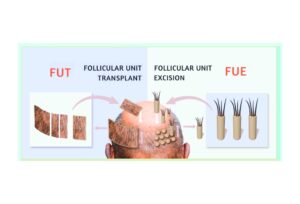Although minoxidil and finasteride are the two hair loss treatments that have been FDA-approved, they’re not the only treatments available. Below are two treatments that many men have found to help in their battle against hair loss.
HOW TO CARE FOR OUR HAIR & HAIR FOLLICLES.
Hair loss is caused by a combination of hormones and “balding” genes. The good news is that even people who are balding have a supply of non-balding hair that can be successfully transplanted to the balding or thinning areas.
It is quite normal to lose some hair every day. A person’s head has tens of thousands of hairs, and the average person loses about 100 hairs a day. This is known as hair fall.
However, hair loss is quite a different thing. It is often called “male pattern baldness,” as it generally affects men, and it is caused by the male hormone, testosterone. When testosterone is changed chemically, by an enzyme in the skin (5-alpha reductase), it becomes a more potent hormone, known as dihydro-testosterone (or DHT).
Now we come to an important distinction: On its own, DHT does not cause hair loss. Hair loss occurs only when DHT comes into contact with hairs that are genetically programmed to suffer under its influence. This means hair loss arises from a combination of two factors: the hormone DHT, plus the fact that you have inherited genes that cause your hair to be sensitive to DHT. These genes might come from either side of your family, from your father or mother, they might skip a generation and they might affect one brother (or more rarely, a sister) but not necessarily all your siblings.
The good news is that this genetic disposition to hair loss generally affects only certain parts of the scalp, typically the top of the head and the crown.
This is why balding people usually have the horseshoe-shaped fringe of hair surrounding the bald area. These hairs in the fringe, and notably at the back of the head, are not genetically sensitive to DHT. This explains why hair transplantation, which transfers non-balding hairs (i.e. those that are not genetically sensitive to DHT) to bald areas, is so successful. Even in the new areas of the scalp, which were previously bald, these hairs retain their non-balding qualities.
In other words, hair transplantation provides a lasting solution to hair loss.

















